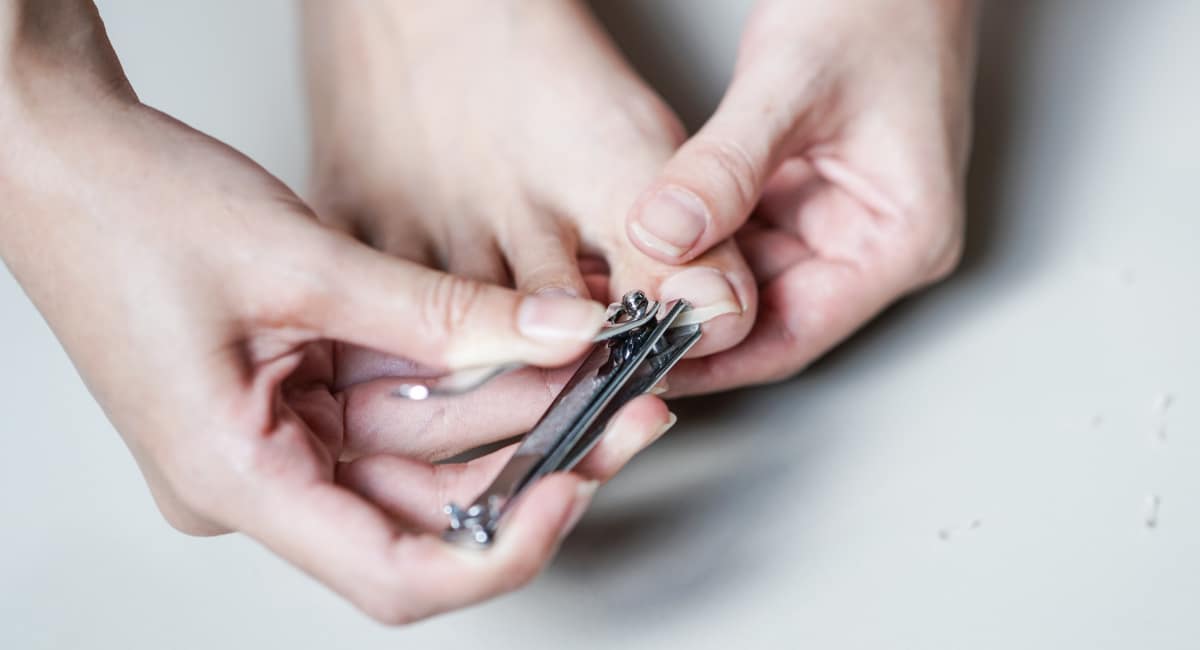Sure, they can be painful, and they can certainly look monstrous. But fortunately, an ingrown toenail is not something you should fear.
Most instances of ingrown nails are minor terrors at worst and can be handled simply enough at home. And when something a bit more serious or complicated is going on, your experts here at Kalamazoo Podiatry can help!
Of course, the best way to keep yourself from having to deal with ingrown toenails stalking your feet is to take steps to reduce your risk of suffering them in the first place. We have some advice for you on that front, too!
The first step to defeating a monster, however, is knowing it.

How Do Ingrown Toenails Happen?
An ingrown toenail is a rather straightforward condition—at least on the surface. It happens when the corner or side of a toenail begins to grow downward into the soft flesh beside it.
As the harder nail digs into the softer skin, the latter becomes easily irritated. You may see symptoms such as:
- Redness.
- Swelling.
- Pain and tenderness, usually while walking.
The big toe is by far the most likely to suffer from an ingrown toenail. It is still possible, however, for any other toe to have this condition.
So while the “what” of an ingrown toenail is rather simple, the “how” of it is not always so obvious at first.
There are several different factors that can be in play behind an ingrown toenail. Determining which one it is a big step toward reducing occurrences of this problem for good.
Specific causes of ingrown toenails can include:
- Tight or ill-fitting shoes. Shoes that create too much pressure against the toes can force nails to start growing inward. This includes both shoes that shift weight toward the front of the foot (looking at you, high heels) as well as shoes with cramped toe boxes that force toes to squish together.
- Improper toenail trimming. The way you cut your toenails can also have an influence on ingrown toenail development. Nails that are cut too short or with rounded corners are more likely to grow inward.
- Toenail trauma. Toenails can do a pretty good job of guarding your toes from injury, but they can also be on the receiving end of some tough trauma themselves. Whether from one heavy impact or repeated trauma (such as hitting the front of a shoe over and over while running), toenails can become injured, fall off, and start to become ingrown when they regrow.
- Some people are simply born with a tendency for their toenails to be curved and grow inward. It is something passed down from generation to generation, so if you have a lot of ingrown toenails in your family, your odds of having them are higher, too.
What Can You Do About an Ingrown Toenail?
If your ingrown toenail is a mild case, odds are good that it can be effectively treated at home.
When is an ingrown toenail not mild? If:
- It is causing you severe pain; like even touching it is too much for you.
- You see signs of infection, such as heavy pus discharge, radiating streaks of red from the area, or a fever.
- You have diabetes, in which everything that happens to your feet can be more complicated.
In any of the above cases, it is best to call us first than to try anything at home. Otherwise, try the following home treatment:
- Soak your affected foot in warm water for 15-20 minutes (although there’s nothing stopping you from soaking both feet if you like the feel of it). Add some Epsom salts if you wish, but they are optional.
- After soaking, dry off your feet. Apply some antibiotic cream to the area, then place a loose adhesive bandage around the toe. Stick with wide or open-toed shoes for the rest of the day, if possible.
Soak your feet 3-4 times per day, using new bandages afterward. If you do not see signs of improvement after a couple days, give us a call.
Treating Recurring Cases (and Preventing New Ones)
One ingrown toenail every now and then is not a huge deal. Chalk it up to life. If you keep getting ingrown toenails over and over, however, then something likely needs to change.
The first step is looking over the causes of ingrown toenails mentioned above. How do you shoes fit? How are you cutting your toenails? Are you protecting your toes against trauma? Making changes to footwear and environment can often make consistent ingrown toenails go away.
However, if such changes are ineffective, it might be that your problem is more genetic. In these cases, we may recommend your toenail be partially or completely removed, then the nailbed beneath treated so that no new nail comes back. It is a permanent solution that can be performed right in our office under local anesthesia.
Find Relief from Villainous Ingrown Toenails
An ingrown toenail is not something that should direct your life—nor is it something you should be afraid of! If you’re struggling, we can help.
Call Kalamazoo Podiatry to schedule an appointment at either of our two area offices:
- Kalamazoo – (269) 373-1019
- Allegan – (269) 673-8757
If you prefer to contact us electronically, please feel free to do so via our online contact form! Send a message on and a member of our staff will respond to you.

